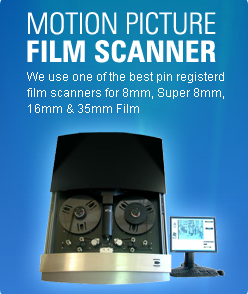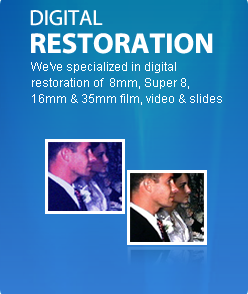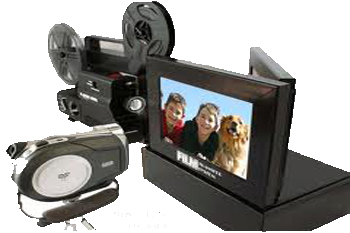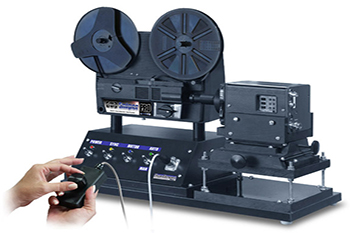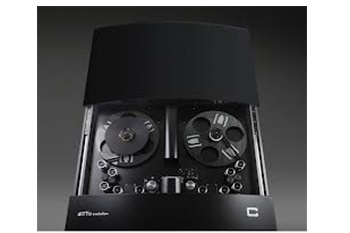
Film Conversion Equipment
Film Scanning and Film Transfer Equipment Types
The type of film scanning machine used for your 8mm, Super 8 or 16mm film conversion will have as much of an impact on the quality you receive as the resolution of the scan itself will. For example, if you wanted to digitize a photograph and tried doing it two different ways. You first put the photograph down on a table and took a picture of it using your smart phone or camera. Then you took the picture and scanned it using a flatbed scanner. If you compare the two side by side on your computer it will become really obvious that the flatbed scanner produced a digital image as good as the photograph. However, the picture you took with your phone or camera does not look close to the quality of the original photograph.
The same goes for scanning your 8mm, Super 8 or 16mm film. The real-time and frame by frame machines below are using a camcorder to take a picture of your film. The motion picture film scanner and Datacine machine are scanning the film. The results will be significantly different.
Film Conversion Equipment |
|
Real Time
|
|
Frame by Frame
|
|
Professional Film Scanners
|
|
The film transfer processes above are the basics types and do not include any restoration by themselves. Restoration comes in many different capabilities from color and exposure correction, to grain elimination, to stabilization
Butte Silver Bow Fun Facts: 1881 - Silver Bow County is established with Butte City as the county seat. 1864 - Prospectors strike gold in Silver Bow Creek, register Butte’s first mines. 1870 - Placer gold mining gives out and population drops from 500 to 150. 1872 - First Copper king, William A.
Montana Fun Facts: Army, often referred to as “Custer’s Last Stand.” Yellowstone National Park, located in southern Montana and northern Wyoming, was the first national park established in the United States. Montana is the fourth largest U.S. state by area, behind Alaska, Texas and California, but with an average of just six people per square mile, it is one of the country’s least densely populated states. Although the name Montana is derived from the Spanish montaña (“mountain” or “mountainous region”), it has an average elevation of only 3,400 feet, the lowest among the Rocky Mountain states.
